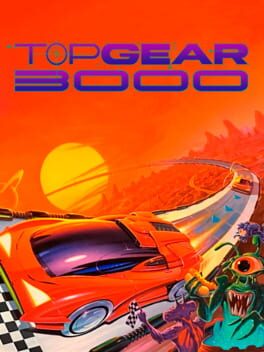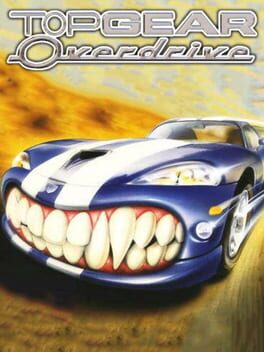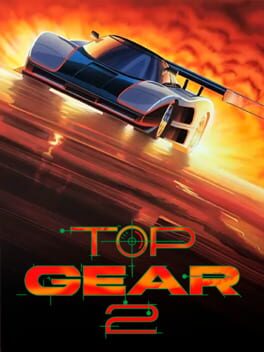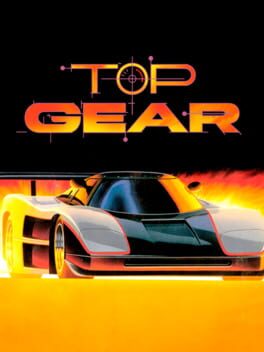

The last game of the Top Gear series for the SNES exceeds ordinary dimensions and goes into outer space. Face the challenges found in 48 exciting tracks and become the best pilot in the entire galaxy! Just like the previous games, Top Gear 3000 comes with a password system that allows the player to continue a game in progress. The upgrade system of Top Gear 2 gained new breath and now comes with newly designed parts: ranging from tires to engines up to atomic turbos! As players travel from one planet to another via spacecraft, they race on various planets in different systems, getting progressively harder. The prize money earned in each race increases as does the price of new car parts... Moreover, the game comes with a versus mode which allows up to 4 players to race simultaneously via splitscreen.
Also in series
Reviews View More
Early-to-mid-90s racing games are a interesting bunch. No matter the developer, the gameplay structure was pretty identical for a majority of the notable titles – you go forward, steer left and right, and try to keep the lead and not hit obstacles. There are exceptions, of course, but reversing and turning the car around was usually out of the question.
Enter Lotus. A licensed series by the car manufacturer of the same name, it’s a trilogy of PC and Amiga racing games that follow the same exact format. While nothing too remarkable nowadays beyond some seriously good music (particularly the Amiga version; that machine could put out good stuff), it directly led into the birth of the Top Gear SNES racing games.
The Top Gear games were and are immensely popular in Brazil, and it’s not really too hard to see why – they are very pick up and play, and since the first game was always split-screen (like Super Mario Kart), couch co-op was pretty much encouraged. Not a particularly special game by any means, but I find mentioning the series’ popularity in Brazil important. That said, for a 1992 SNES racing game, it’s pretty impressive on the tech end, having actual hills and valleys in its tracks, as well as an iconic soundtrack by Barry Leitch.
Top Gear 2 came out a year later, and it’s a flat-out improvement in most gameplay areas; the fuel mechanic was removed (in TG1, players had to drive into pit stops to refuel) in favor of forcing the player to upgrade the gearbox in order to not run out of gas, tracks are generally longer, new visual effects are present (such as a 3D tunnel – in 1993 SNES!), and, lastly, instead of choosing different cars, the player could upgrade theirs with the prize money from winning races. It also had a Genesis release, which, as far as I’m aware, doesn’t have much different beyond a butchered soundtrack.
Those aren’t the game this review is about, mind you; the reason I’m mentioning them is because Top Gear 3000 is, at least personally, the apex of this specific variant of racing games. It takes everything the previous games did and improves on it considerably, albeit it’s still trapped by the limitations of the SNES and what was viable for the genre at the time. In other words, it’s the climax of the formula, but does not break through it. Anyways, getting into it:
Unlike the previous two Top Gear games, this one has a story. Two stories, in fact; the manual has an entirely different plot from what the in-game intro presents. That said, neither matters, but the important part is: this is a racing tournament… in space! This time, instead of racing through big cities, the racers are instead going through several solar systems. Fantastic (if not unique) premise for a racing game, but I have my gripes with it, but that’s for later.
This game is wildly impressive visually for a SNES game. It’s no Star Fox or whatever homebrew devs make with their tech demos nowadays, but it makes use of a special SNES enhancement chip, the DSP-4, which assists with drawing the tracks on-screen. Thanks to that, the tracks look and move smoothly compared to other games of the era. The hills, bends, and valleys present in the other games also feel more natural thanks to that, and the sprite scaling the SNES specialized in helps decorate the outskirts of the track.
Additionally, the backgrounds also look damn good. Some could do with more detail and some races lack them entirely (the ones with foggy weather, in particular), but when it lands, it lands well.
The racing is much of the same as has been described above, but Top Gear 3000 has a few tricks up its sleeve to make it stand out. First of all, tracks have multiple paths, which is possible thanks to the DSP-4. It doesn’t sound like much, but it adds a good amount of variety. Sure, you could stick to the shorter, main path, but the other paths can hide bonuses in the form of extra cash for upgrades and charges for nitro boosts. Furthermore, this is a really fast racing game, especially once you get some engine upgrades – you go blazingly fast, and sure, the tracks are 2D, but the effect is surprisingly effective when you’re the one behind the wheel thanks to the way the tracks are rendered.
The second thing Top Gear 3000 does to stand out and innovate is including power-ups. The player starts with nitro boosts, but can purchase a few additional “weapons” (none damage opponents, but that’s how the game terms them. Weird.) as the game goes, all of which have good utility. That said, boosting, jumping, and the occasional warp are usually enough to get and keep the lead. Yeah, this game’s not really hard, unless you MASSIVELY screw up and hit a lot of obstacles or completely run out of fuel. To add some difficulty, some of the tracks feature foggy/night weather (restricting vision), barriers on the track, and thinner roads.
This game brings back the fuel meter, which is instead recharged by driving over red strips during the race. It’s usually simple enough, but as the races get harder, the game makes them much thinner and infrequent, to the point where the player will likely be out of fuel for heavy chunks of the race and will have to rely on steering well enough and boosting to keep the lead. It’s a surprisingly fun challenge, which rewards knowing the track layout and having a fast reaction time with being able to keep the lead. Or, you could play safe and just stop the car over the fuel strip, but that’s kinda lame. There’s also a blue strip, which repairs damage you take during the race, which shouldn’t be an issue if you’re at least somewhat competent at racing games.
And… that’s really it for TG3000 gameplay-wise. It really doesn’t do much more than that. The weapon system and track splitting mechanics are fantastic improvements on this specific style of racing game. It also has couch co-op and four-player multiplayer; the latter sounds cool, but beyond being somewhat impressive… eh. The lack of music and barren track makes it feel empty.
My biggest problem with the game, however, is how it underutilizes its premise. The idea of a racing game throughout the galaxy is amazing, but a lot of the environments feel too Earth-like. There are some Moon-like environments, but a bit too many canyons and forests for me. It’s something the game gets better at later on, with the latter tracks featuring some futuristic cities and pretty cool geography, such as floating islands connecting to beaches and stuff of the sort. That said, it still feels like an underutilized premise.
Music is alright. It was composed by Neil Biggin, who [has stated that he was worried he didn’t quite match the genre’s expectations]( https://www.youtube.com/watch?v=RMzE5fFq-QU&list=PL090E93CE1ACA4236). And, being fair, I can see why he’d feel that way, as it’s a lot tenser compared to what I’d expect from a racing game of that era. It’s a lot tenser and not really upbeat, which adds to the space theming when the track actually does something substantial with it.
In conclusion, Top Gear 3000 is, in my opinion, the climax of this specific variant of racing games. You can play the Lotus games and work your way up and feel the improvements, with nothing feeling like it’s missing from the preceding game – even Top Gear’s spiritual sequel, Horizon Chase: Turbo, a game I have a lot of love for, is missing some of the cooler stuff like splitting tracks. Personally, I find it kind of disappointing that this direction was abandoned in favor of more realistic arcade racing with Top Gear Rally; this is just me speaking with thick nostalgia goggles on, but I firmly believe the linear improvement the genre saw stopped immediately after TG3000 (and the series itself died after some progressively worse games, both critically and commercially), and that's always saddening.





